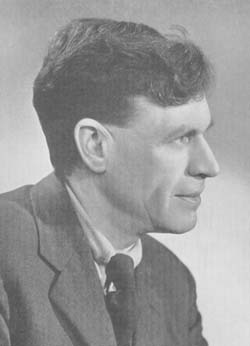Cecil Terence Ingold facts for kids
Cecil Terence Ingold (born July 5, 1905 – died May 31, 2010) was a very important scientist. He is known as "one of the most influential mycologists" of the 20th century. A mycologist is someone who studies fungi, like mushrooms and molds. He was the president of the British Mycological Society. He even organized the first big international meeting for fungi scientists. A whole group of water fungi, called Ingoldian fungi, was named after him because of his work.
Contents
Ingold's Early Life and Studies
Terence Ingold was born in Blackrock, Dublin. He went to school in Bangor, County Down. He later studied at Queen's University in Northern Ireland. In 1926, he earned a top degree in Biology and Botany. He focused a lot on fungi during his studies.
After Belfast, he went to the Royal College of Science in London. There, he learned a lot about how plants work. He also loved going on scientific trips. These trips helped him see how plants live in their natural environments.
In 1927, he went back to Queen's University. He earned his doctorate degree in botany in 1930. His research looked at how plant sap can stay balanced. He also mapped the plants on Slieve Donard mountain.
Teaching at Universities
In 1929, Dr. Ingold became a lecturer at the University of Reading. He joined the British Mycological Society in 1932. This helped him focus even more on his interest in fungi.
In 1937, he moved to the University College of Leicester. He became the head of the Botany Department. He liked to teach students using living plants, not just old samples. He also made clear drawings of what he saw under the microscope. These drawings were a big part of his research and teaching.
He became very interested in the fungi that live in water. He studied them in the rivers and waterways around Leicestershire. In 1942, he published a very important paper. It was about "Aquatic hyphomycetes," which are water fungi found on decaying leaves.
Leading the Way at Birkbeck College
In 1944, Professor Ingold moved to Birkbeck College, University of London. This was one of the best places in the UK to study fungi. He had to help rebuild the department after World War II. In 1952, the department moved to a new building.
At Birkbeck, he continued to teach many students. He always used living fungi and plants in his lessons. He also took students on many field trips. These trips helped students learn about plants and fungi in nature.
He helped create a master's degree course in mycology. He and his students did a lot of research. They studied water fungi and how fungal spores are made and spread. He wrote important books like Dispersal in Fungi (1953) and Spore Liberation (1965). These books explained how fungi spread their tiny spores. In 1971, he combined these into a new book called Fungal Spores, Their Liberation and Dispersal.
His textbook, The Biology of Fungi, was first published in 1961. It helped many students learn about fungi. Professor Ingold retired from Birkbeck in 1972.
Helping Science and Education
Professor Ingold also held many important jobs outside of his teaching. At the University of London, he was the Dean of Science. He also helped with university entrance exams. He was even the Deputy Vice-Chancellor.
He helped universities in other countries, like the University of Botswana, Lesotho and Swaziland. He also helped set up new universities in the UK.
He was the president of the British Mycological Society twice. He also led the first big international meeting for fungi scientists in 1971. Even after he retired, he kept working on fungi for 30 more years! He wrote many scientific papers.
Ingold's Big Contributions to Fungi Science
Terence Ingold is most famous for a few key things:
- He studied how fungi release their spores. Spores are like tiny seeds that help fungi spread.
- His textbook, The Biology of Fungi, was used by many students.
- He discovered a completely new group of fungi. These are the aquatic hyphomycetes, which live in water. Today, over 300 types of these fungi are known!
Awards and Special Recognition
Professor Ingold received many awards for his important work:
- In 1970, he received the Companion of the Order of St Michael and St George (CMG). This was for his work in education in Africa, Jamaica, and the UK.
- In 1983, he won the Linnean Medal for Botany. This is a very high honor in plant science.
- He received special honorary degrees from several universities.
- In 1996, he won the De Bary Award. This award recognized his amazing work on how fungi release and spread spores. It also honored his discovery of water fungi.
- In 1998, he received the Millennium Botanical Award and a Gold Medal.
Important Books by Ingold
- 1939. Spore discharge in land plants.
- 1971. Fungal spores: their liberation and dispersal. This book combined his earlier works on how fungi spread.
Things Named After Ingold
Several types of fungi and related things have been named after Cecil Terence Ingold to honor his contributions:
- Ingoldia
- Ingoldiella
- Ingoldiomyces
- Acaromyces ingoldii
- Bensingtonia ingoldii
- Lindgomyces ingoldianus
- Lophiostoma ingoldianum
- Massarina ingoldiana
- Pseudocercophora ingoldii
See also
- Category:Taxa named by Cecil Terence Ingold


